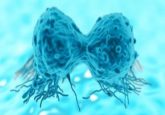Could cancer-associated markers be visible early during human development?

A new study from the Virginia Bioinformatics Institute (VA, USA), recently published in Oncotarget, has uncovered a link between the genomes of cells that originate in the neural crest and tumor development. The findings shed some light on why certain cancer types share clinical and genomic features, and may lead to novel methods to diagnose and treat cancer of both the brain and skin.
The team, led by Harold ‘Skip’ Garner (Virginia Tech Carilion Medical School), analyzed repetitive DNA sequences termed microsatellites (an often-ignored part of the human genome) in order to investigate when cancer-causing genomic changes occur. Microsatellites are known to play a role in certain diseases such as Fragile X and Huntington disease, although for a long time they were considered ‘junk DNA’ because their function was unclear. The Virginia team has demonstrated microsatellites to be informative about many diseases, ranging from autism spectrum disorder to cancer.
There are more than a million microsatellites in the human genome, including in neural crest tissues – a thin layer of cells within the embryo containing genetic instructions to build hundreds of cell types. It has been hypothesized that these instructions may be reproduced in a confused way when cells migrate from the neural crest – for example, neurological tumors could possibly arise from glial cells that develop from the neural crest.
The study researchers report that cancer types can be predicted from specific markers within these repetitive sequences, called cancer-associated microsatellite loci. The researchers hope that, with further study, inter-related genetic and hereditary traits of certain cancers may be traced to their common origin at the neural crest, which could potentially lead to novel, more effective therapies and easier tumor identification.
Source: Virginia Tech press release




